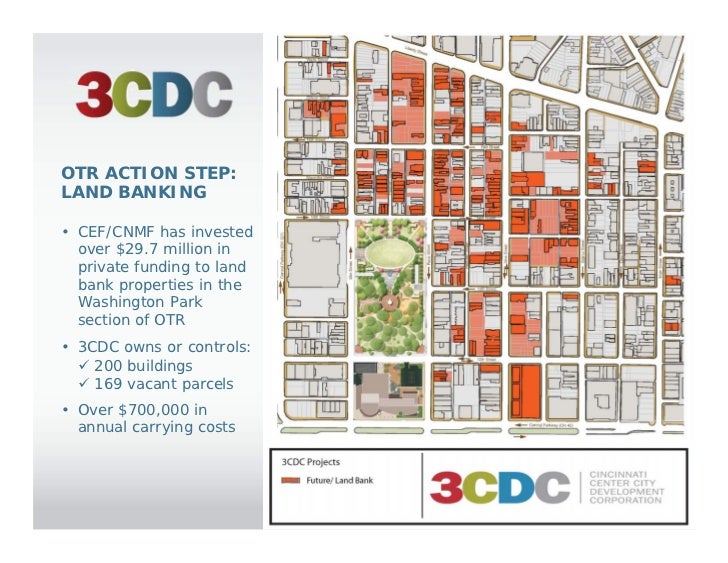An Attempt to Democratize Our Right to the City
After reading David Harvey's The Right to the City, I found myself thinking about how his ideas and call to action relates to what I've seen and the cities in which I've lived. Cincinnati stood out to me as an example of not only a city that came from turmoil but a city that is trying to reuse it's surplus for good.
Long story/history short, after riots in 2001, the city took action to improve the most dangerous area of Cincinnati, Over-The-Rhine, just north of the financial downtown district. A company called 3CDC would obtain federal funds through a newly implicated New Markets Tax Credit system and then slowly revitalize areas of OTR. The non-profit organization aimed to (taken from their website)


Long story/history short, after riots in 2001, the city took action to improve the most dangerous area of Cincinnati, Over-The-Rhine, just north of the financial downtown district. A company called 3CDC would obtain federal funds through a newly implicated New Markets Tax Credit system and then slowly revitalize areas of OTR. The non-profit organization aimed to (taken from their website)
- create diverse, mixed-income neighborhoods supported by local business
- preserve historic structures and improve streetscapes
- create high density/mixed-use development
- create and manage great civic spaces
In his writing, Harvey says, "'accumulation by dispossession' also lies at the core of the urban process under capitalism." Although 3CDC is not kicking existing residents out of the area, the people do not feel welcomed and valued in their growing neighborhood. Displacement and gentrification is happening despite 3CDCs goals. Therefore I don't know if the company is accomplishing what Harvey is calling for in The Right of the City. I'm not sure the process has been democratic and I've found it hard to have an objective opinion on the matter. While I hate that people are being displaced, the new OTR is doing so much to further the growth of Cincinnati. However I do wonder if the company can implement higher standards to better focus their federal funds for existing residents in OTR.





I think one of the hardest things with gentrification is insuring space for everyone. I'm not sure that I've seen an example of gentrification that was democratic in the sense that it gave space for everyone. Under the system of capitalism it seems like if a profit can't be made then it won't attract developers. At that point I think it's up to the city and non-profits to try to hold on to those spaces. Which it is sad that in this example it wasn't able to do enough it seems.
ReplyDeleteI feel like this is applicable to so many neighborhoods everywhere. It's difficult to pick a side because its a double edged sword. I'm not convinced there is a right answer.
ReplyDelete